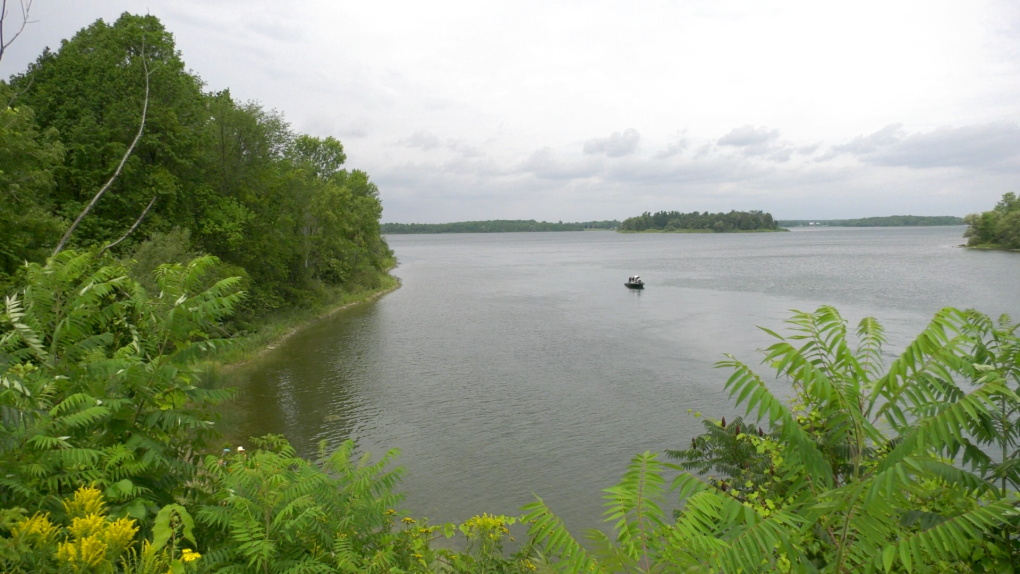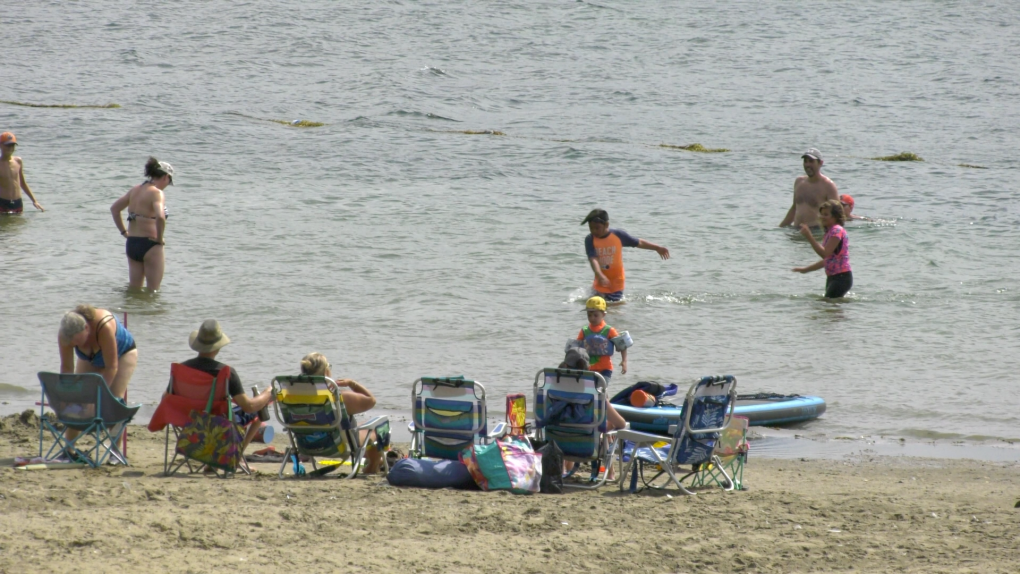Long Sault Parkway: A hidden gem with a history lesson
There's a perfect spot tucked away along the St. Lawrence Seaway for those vacationing closer to home this summer, and you can find yourselves driving through a history while taking in those scenic views.
The Long Sault Parkway stretches more than 11 kilometre connecting a series of 11 islands on the St. Lawrence River, located between Cornwall and Brockville just south of Hwy. 401.
"It's just sort of a casual place where you can come and enjoy your day, whether its kayaking, walking or biking," says Liam Carson with the St. Lawrence Parks Commission.
Three campgrounds and two beaches are also scattered along the route, perfect for families.
"Right now you can drive through at no cost, you can bike through at no cost," Carson said. "If you want to stop and have a picnic you just pay for a day-use fee, whether you want to do that on one of our islands, if you want to go to one of the specific beaches for that purpose, that's fine as well."
Like Milles Roches Beach, the largest beach on the seaway between Montreal and Sandbanks Provincial Park in Picton.
Carson said this year he has seen higher than normal usage in the campgrounds, as people are staying closer to home with limited travel options.
"Massive amount of camping, lots and lots of families having the opportunity to camp side by side," Carson said. "Our campsites are 60 feet wide so families can stay safe but be together for the first time in a couple years, so very, very busy."
 A fisherman out on the St. Lawrence River. (Nate Vandermeer/CTV News Ottawa)
A fisherman out on the St. Lawrence River. (Nate Vandermeer/CTV News Ottawa)
Offering many waterfront views for picnics and play dates, the parkway was created after the Seaway Project was finished in 1958.
"They raised the water level 27 feet, so this was all farms and villages," Carson said. "When they raised the water level these were the hills that were kind of sticking up above the fields that were here originally."
That history lesson can be found just 3 kilometres east of the Long Sault entrance to the parkway.
"This is what we do here at the Lost Villages Museum. We tell that story," says Jim Brownell, president of the Lost Villages Historical Society.
Brownell lived through the Seaway Project, and enjoys showing off the 10 heritage buildings that were saved from those nine communities that disappeared.
"The buildings are now fully open, although we have physical distancing and masks (protocols)," Brownell said. "The Moulinette Station is full of heritage and historical artifacts."
 The Lost Villages Museum along Hwy. 2, 3 km east of Long Sault. (Nate Vandermeer/CTV News Ottawa)
The Lost Villages Museum along Hwy. 2, 3 km east of Long Sault. (Nate Vandermeer/CTV News Ottawa)
Historical items that continue to be dropped off daily.
"Almost every day we get artifacts donated to our historical society. We really are running out of space for larger artifacts, but the smaller pieces and documents especially," Brownell said.
The Seaway Project happened from August 19, 1954 to July 1, 1958.
"They had the flood that day and we had to say goodbye to our town where we went to school, where we worshipped," Brownell said.
"It was quite a traumatic experience for the older people but surely for the young ones like myself, it was an exciting time," he added. "To see all this turmoil and machines that you never thought existed coming here to pick up houses and move them intact."
Passionate about history, Brownell says the museum and parkway go hand in hand.
"We're both telling about the two projects that were going on here and the results of those two projects after four years of destruction," he added.
The islands connected by the parkway are named after families that used to live in those towns and villages.
"There are a lot of people who have been coming here for generations," he added. "This is where they came camping with their grandparents."
 Milles Roches Beach along the Long Sault Parkway. (Nate Vandermeer/CTV News Ottawa)
Milles Roches Beach along the Long Sault Parkway. (Nate Vandermeer/CTV News Ottawa)
Campgrounds close around Thanksgiving, and day-use privileges end after the Labour Day weekend.
The parkway is open until mid-November when it shuts down for the winter.
"People here for the first time are kind of astonished that it's here and that they just kind of drove down the 401 and never stopped in to see it," Carson said.
"It kind of makes me proud every time someone has that sparkle when they see the place," he added.
CTVNews.ca Top Stories

'He's in our hearts': Family and friends still seek answers one year after Nathan Wise’s disappearance
It’s been a year since Nathan Wise went missing and his family is no closer to finding out what happened to him.
'My family doctor just fired me': Ontario patients frustrated with de-rostering
Dozens of Ontarians are expressing frustration in the province’s health-care system after their family doctors either dropped them as patients or threatened to after they sought urgent care elsewhere.
Ottawa pizzeria places among top 20 deep-dish pizzas in the world at international competition
An Ottawa pizzeria is being recognized as one of the top 20 deep-dish pizzas in the world.
Canada Post cracks down on Nunavut loophole to get free Amazon Prime shipping
Amazon's paid subscription service provides free delivery for online shopping across Canada except for remote locations, the company said in an email. While customers in Iqaluit qualify for the offer, all other communities in Nunavut are excluded.
Wildfire near Fort McMurray more than triples overnight, several evacuation alerts remain in place
The fire burning near Fort McMurray grew from 25 hectares to 5,500 hectares over the weekend.
Putin replaces Russian defence minister in rare cabinet shakeup
Russia’s President Vladimir Putin began a Cabinet shakeup on Sunday, proposing the replacement of Sergei Shoigu as defence minister as he begins his fifth term in office.
Man fatally 'slashed in the neck' in downtown Toronto, suspect outstanding
Police are searching for a male suspect after a man was “slashed in neck” on Sunday morning in downtown Toronto and died.
WATCH Dashcam video shows terrifying near-miss on two-lane northern Ontario highway
There were some scary moments for several people on a northern Ontario highway caught on video Thursday after a chain reaction following a truck fire.
Edibles, armchairs and adapters: Here are the recalls for this week
Health Canada announced various product recalls this week, including electric adapters, armchairs, cannabis edibles and vehicle components.

































